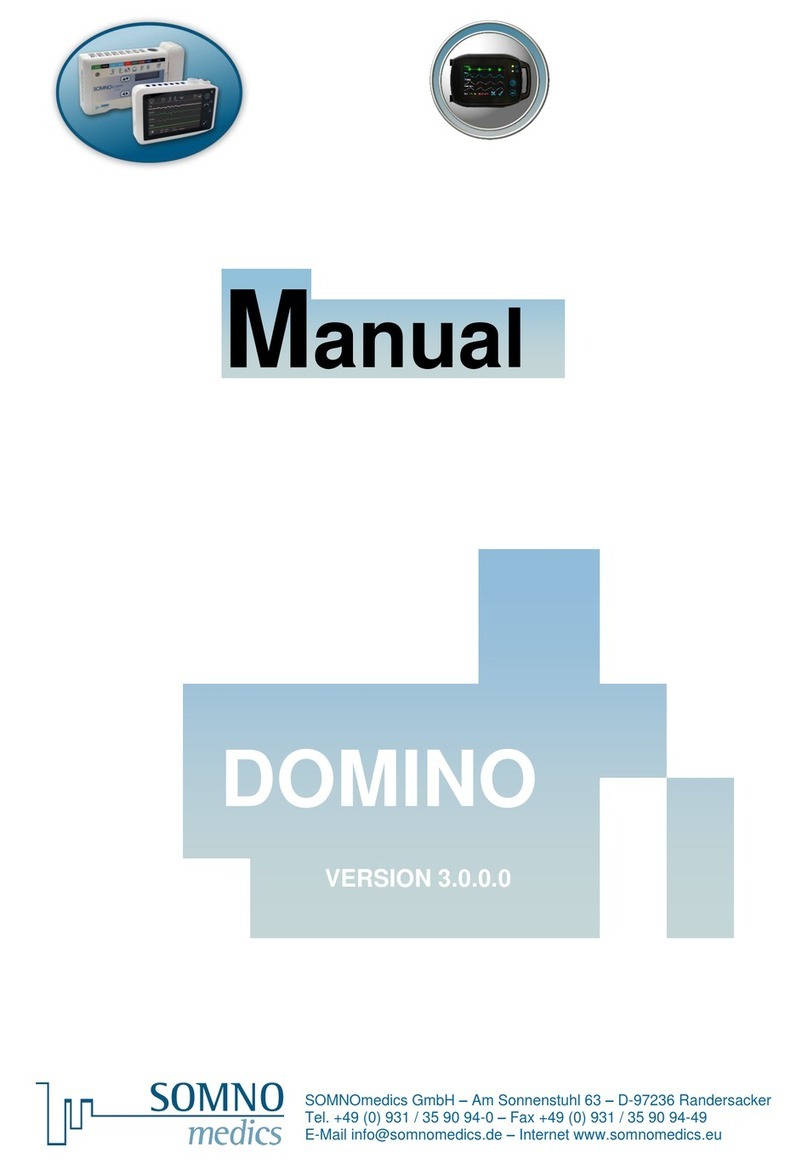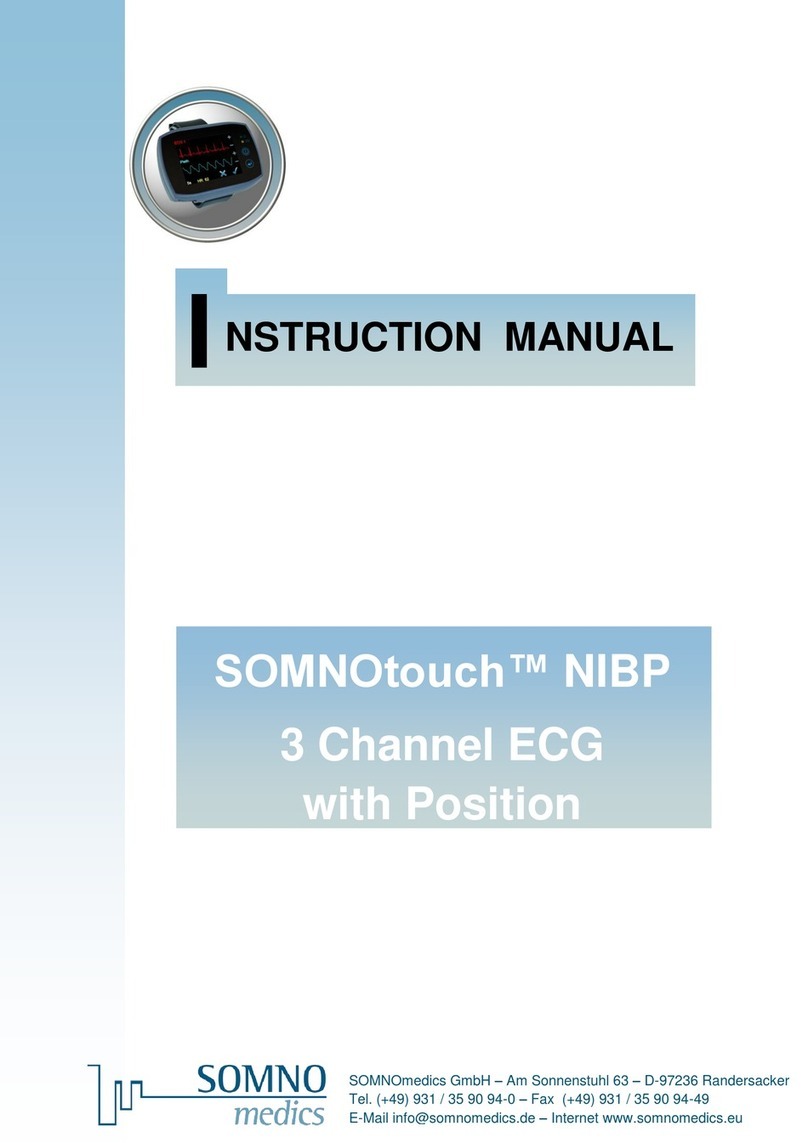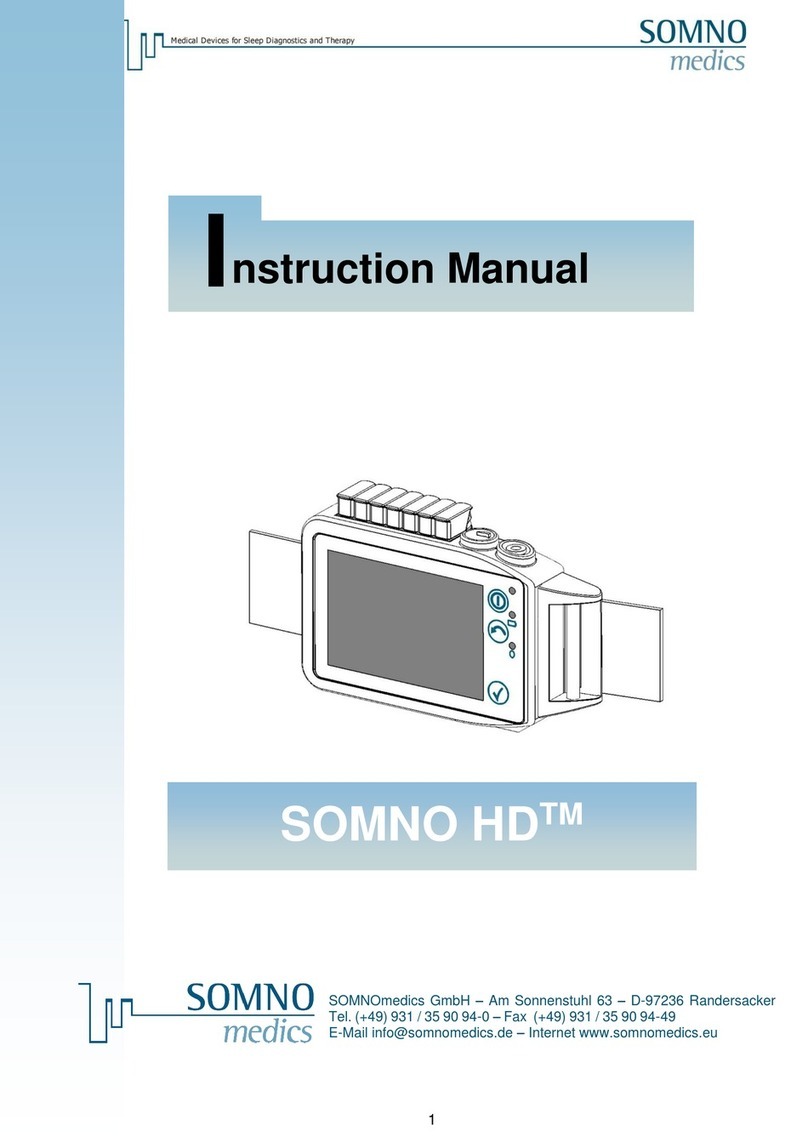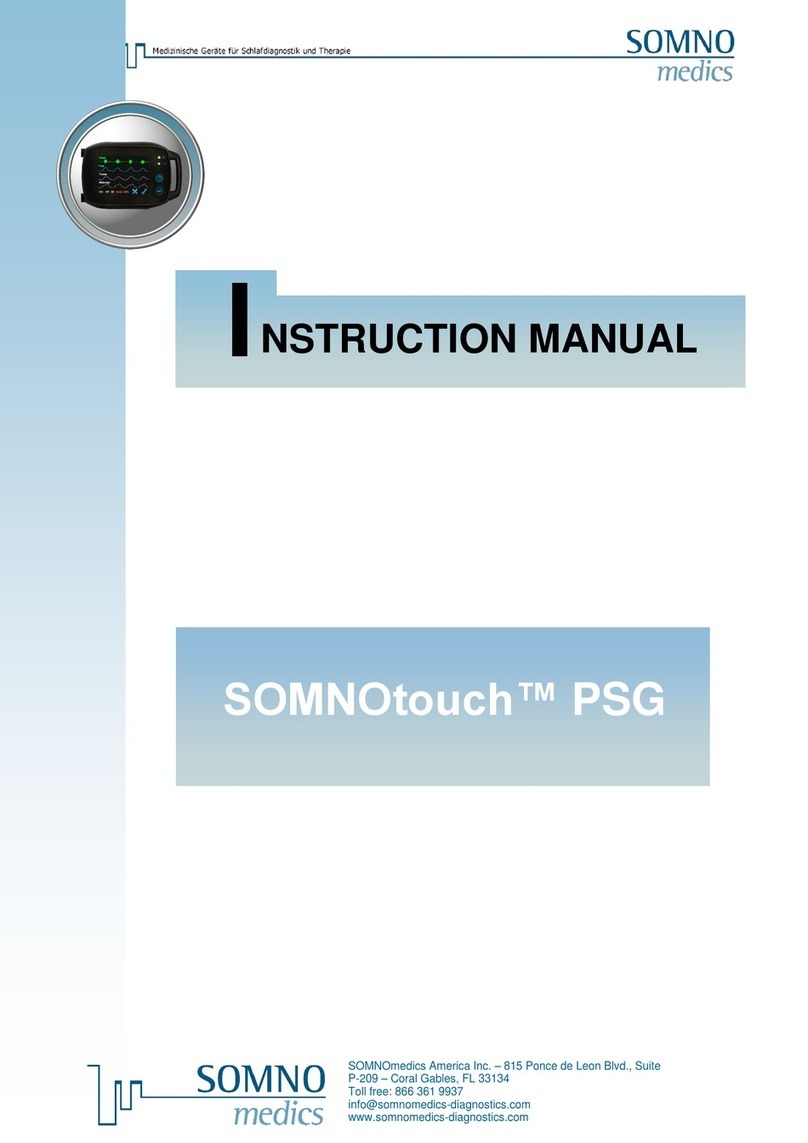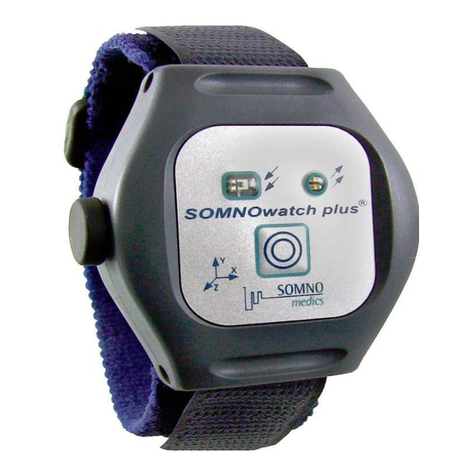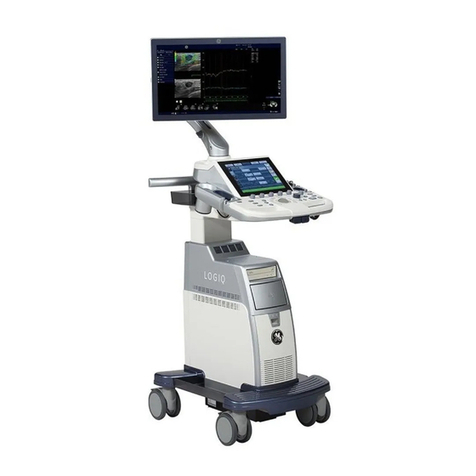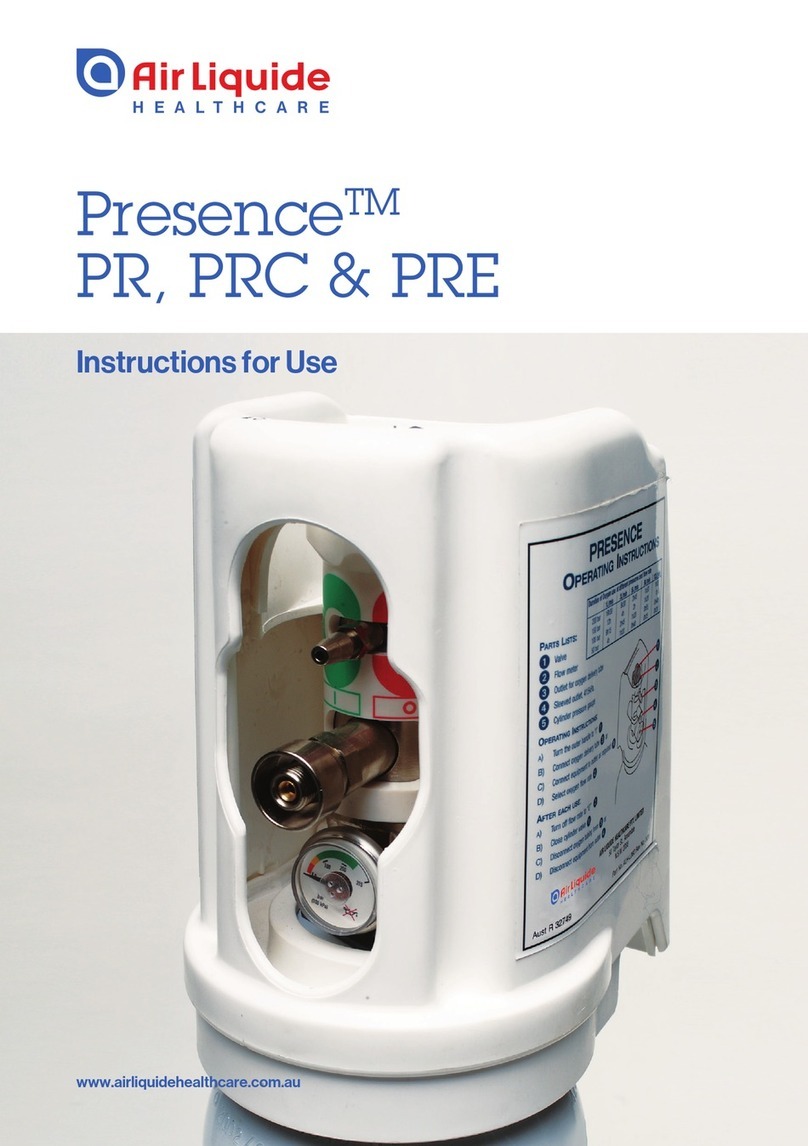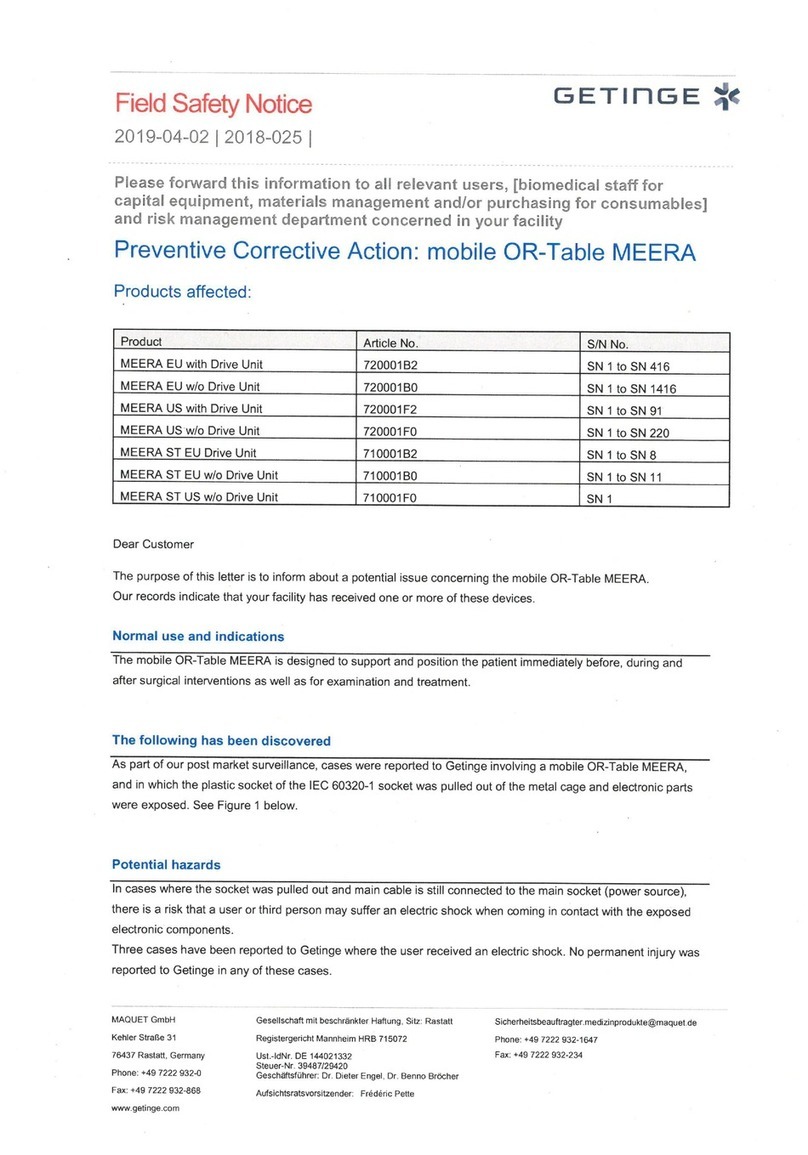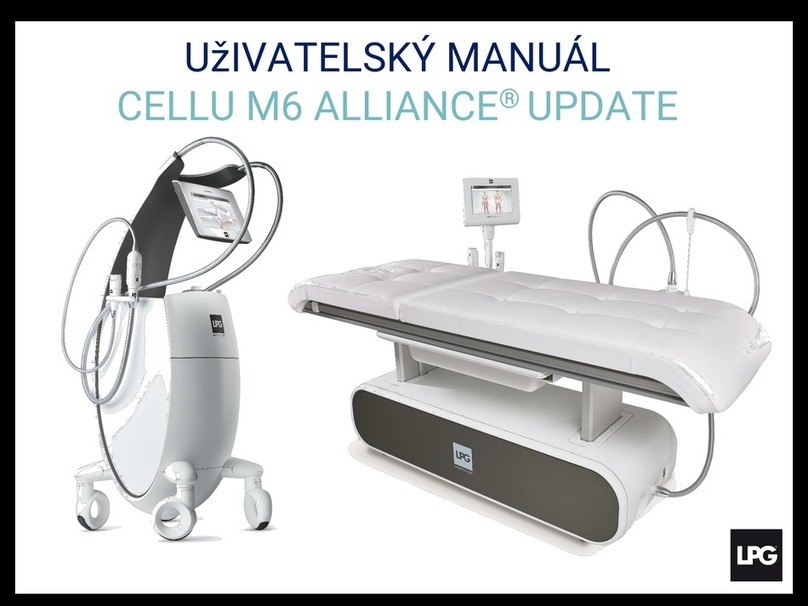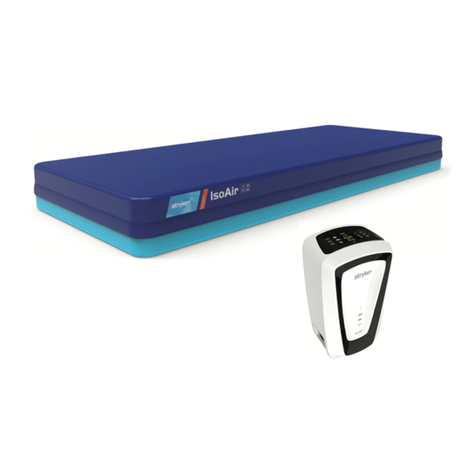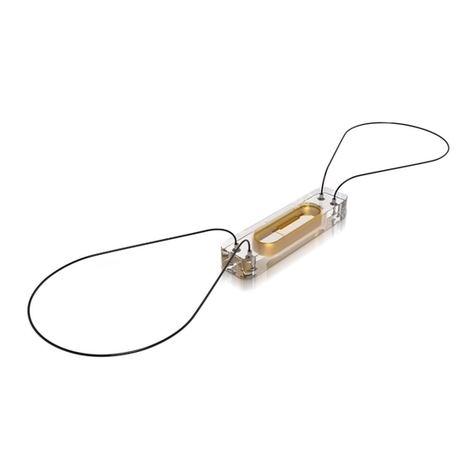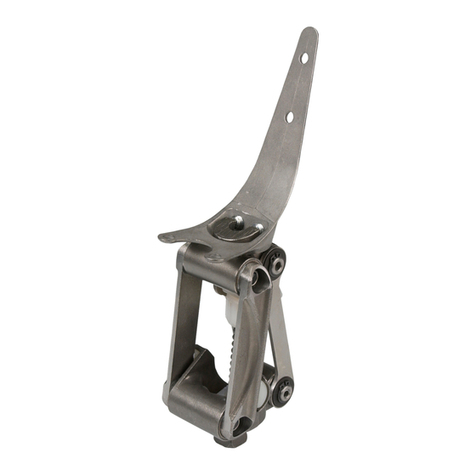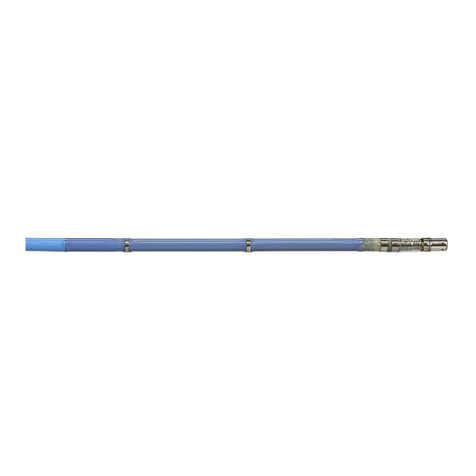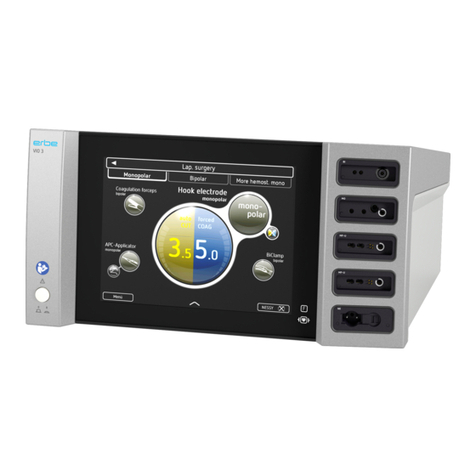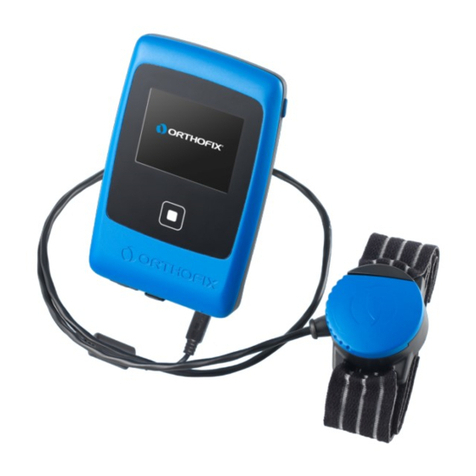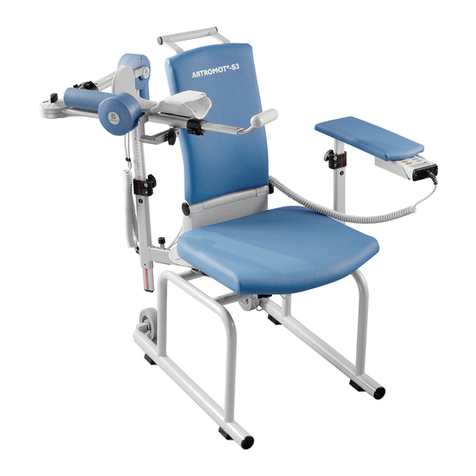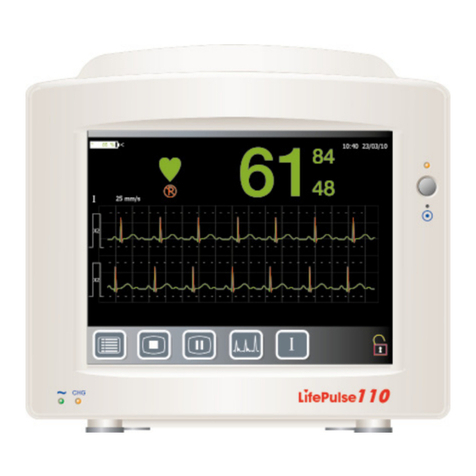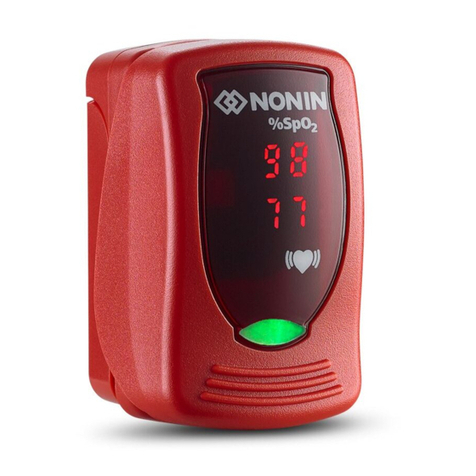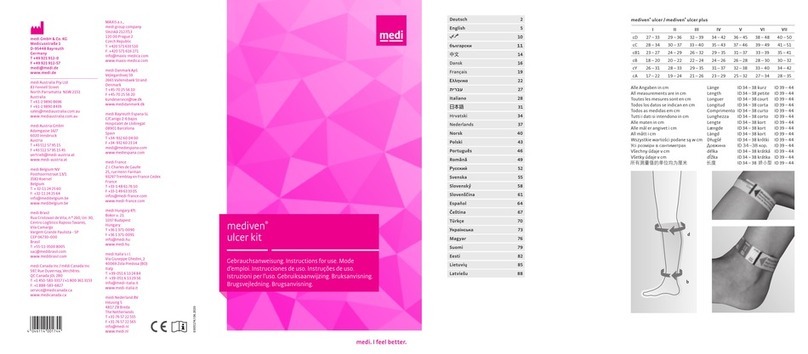SOMNOmedics SOMNOtouch NIBP Flow User manual

SOMNOmedics GmbH –Am Sonnenstuhl 63 –D-97236 Randersacker
Tel. (+49) 931 / 35 90 94-0 –Fax (+49) 931 / 35 90 94-49
E-Mail info@somnomedics.de –Internet www.somnomedics.eu
SOMNOtouch™ NIBP
Flow
I
NSTRUCTION MANUAL

2
SOMNOmedics GmbH –Am Sonnenstuhl 63 –D-97236 Randersacker
Tel.: (+49) 931 / 35 90 94 - 0 –Fax: (+49) 931 / 35 90 94 - 49
E-Mail: info@somnomedics.de - Internet: www.somnomedics.eu
Rev. 0
09.09.2013
All proper names marked with TM are copyright protected by
SOMNOmedics.

3
Content
1Introduction .................................................................................................................... 4
2Safety instructions.......................................................................................................... 4
3Initialisation .................................................................................................................... 4
4Applying the sensors...................................................................................................... 5
5Analysis - Global settings DOMINO light ........................................................................ 6
5.1 Flow-Analysis.......................................................................................................... 7
5.2 Snore-Analysis........................................................................................................ 9
5.3 CPAP-Analysis........................................................................................................ 9
6Report...........................................................................................................................10
7Technical Specifications................................................................................................12
8Cleaning / Desinfection..................................................................................................12

4
1 Introduction
The CPAP/Flow sensor expands the possibilities of your SOMNOtouchTM NIBP to record nasal flow
and snoring. Furthermore it is possible to determine the CPAP pressure.
This instruction manual gives you information on the application and sensor specific settings. Please
note the main instruction manual of the SOMNOtouchTM NIBP.
2 Safety instructions
The CPAP/Flow sensor is not qualified to be used as pressure sensor of intra-
arterial blood pressure systems. It may not be connected to such systems.
The sensor may not be lain in any liquids.
Device and sensors may not be used in live sustaining or life supervising
measures for respiratory monitoring.
3 Initialisation
Having entered the patient data, go to the tab “Respiratory” in Easystart or the tab “Montage” in the
advanced mode and choose the montage “SOT NIBP+Flow”. Then proceed with the initialisation as
usual.

5
4 Applying the sensors
Connect the sensor to the SOMNOtouchTM NIBP. Due to the cognition of the sensor-ID you can plug
the CPAP/Flow-sensor arbitrarily in one of the two sockets.
Now apply the nasal cannula and connect the Luer-Lock to its counterpart at the sensor.

6
5 Analysis - Global settings DOMINO light
In all analysis settings you can change the settings of the parameters for the analysis, the colour
display of the analysis curves and the colour classification of the events (click at the colour field; red
frames in the figures). The analysis source is shown down right (blue frames in the figures).
Select the analysis template “ECG/Bloodpressure”:
Note:
If you want to conduct a CPAP control, you have
to create an analysis template with active CPAP
analysis.

7
5.1 Flow-Analysis
“Hide events during wake”
If you activate this checkbox, automatically scored flow events during wake are not displayed.
Manually edited events during wake are still shown. When you edit events manually, automatic events
that are hidden, are overwritten by the manual scoring.
Note that only events during sleep are included in the analysis for the report. Results shown in the
report are therefore not affected by choosing “Hide events during wake”.
1) “Analysis Window [s]”
Timeframe used by the analysis
2) “Min. Signal”
Minimum value of the signal. An artefact will be detected as soon as the signal falls below this value.
3) “Min. Duration [s]”
Minimum duration for an Apnoea or Hypopnoea.
4) “Max. Duration [s]”
Maximum acceptable duration for an Apnoea or Hypopnoea.
5) “Apnoea Ratio [%]”
The Apnoea ratio states the fractional flow relative to the baseline. All values below this ratio are
detected as Apnoea.
6) “Hypopnoea Ratio [%]”
The Hypopnoea ratio states the fractional flow relative to the baseline. All values below this ratio and
above the Apnoea ratio will be detected as Hypopnoea (please also refer to section 12 on
Correlation).
7) “Central A: central part [%]” (A: Apnoea)
This value indicates to what extend effort and flow events have to overlap in order to be identified as a
Central Apnoea. For example: If more than 50 % of an Apnoea in the flow channel is overlapped by an
effort event it will be scored as a Central Apnoea.

8
8) “Mixed A: central part [s]” (A: Apnoea)
Where no central apnoea is detected but an Apnoea and an effort event overlap for at least 4
seconds, a mixed apnoea will be scored.
9) “% Snore time”
If the percentage of snoring during an apnoea phase exceeds this value, a hypopnoea will be
detected.
10) “Body position correlation [s]”
This Function / Analysis is not available for the SOMNOtouch NIBP.
11) “Editing Option”
With “Editing-Option”, you can define for which manually edited event arousals should be displayed
automatically
12) “Correlation”
This function checks the correlation of the Apnoea and Hypopnoea events to desaturation, heart rate
acceleration/deceleration, arousal and PTT. It is used as additional criterion to detect Apnoea and
Hypopnoea. You can define the “Delay” for the correlation for each parameter separately.
This delay will indicate the maximum time interval between the end of one Apnoea/Hypopnoea and
the end of a correlating event (Desaturation, Heart Rate Acceleration/Deceleration, Arousal, and PTT)
(1).
It is possible to link multiple parameters using the “and”, “or” or “N/A” function for each parameter:
The link “and” means that the correlating event (desaturation, heart rate acceleration/deceleration,
arousal and PTT) must occur within the set delay time for an apnoea or hypopnoea to be detected.
This criterion is essential for the detection of an apnoea, hypopnoea or flow limitation.
The link “or” means that the correlating events may or may not occur at the same time as an apnoea
or hypopnoea but it is not required. When detected, events will be marked in the flow analysis channel.
When “N/A” is selected, the criterion is fulfilled automatically.
If several criteria are linked by “or” but only one is not automatically fulfilled by “N/A” this criterion has
to be fulfilled to define the event.
The checkboxes “Hypopnoea” and “Hypopnoea 2” allow for separate criteria for hypopnoea and to
check for one or both criteria.
13) “Intermediate Wake”
Activating this function will count an Apnoea/Hypopnoea event as sleep during the first wake stage
after a respiratory event. The event however must start in a sleep stage.
14) “Linearize Pressure”
The most accurate method of measuring the flow signal is to use two sensors: nasal cannula and
thermistor, as recommended by the AASM guideline. Simple screenings, which to do not have to
satisfy the recommendations of the AASM, can be done with only the nasal cannula. For this purpose,
we have implemented the option to linearize the characteristics of the flow signal when measured with
only the nasal cannula. This improves the detection of apnoea from the cannula so that apnoea and
hypopnoea are detected precisely without having to apply a second sensor.
Flow
Desaturation
1

9
5.2 Snore-Analysis
1) “Analysis Window [s]”
Time period used for the analysis.
2) “Ratio [%]”
This ratio shows the percentage increase by which the signal needs to exceed the baseline. All values
above this ratio are detected as snore.
3) “Min. Duration [ms]”
Minimum duration of a snore event.
4) “Max. Duration [ms]”
Maximum duration of a snore event.
5) “Connection Time [ms]”
If two snore events follow in this defined time interval, they are counted as one.
5.3 CPAP-Analysis
The trend of the CPAP pressure is calculated and displayed in 15-second intervals.
“Steps displayed in report” allows choosing the raster for pressure values displayed in the report.
Snore

10
6 Report
Open the Report Selection by clicking on “Report...“ in the “Report“ menu.
Additionally select the following report parts and click the View Button.
Note: Only events during TIB will be evaluated in the report.
Respiratory Report
Obstructive / Mixed / Central
A differentiation is not possible with this montage.
Total Apn.
Number (Index):
Total number of all Apnoea (index: per h of TIB).
Hypopnoea
Number (Index):
Number of Hypopnoea.
A + H
Number (Index):
Number of Apnoea and Hypopnoea.
Limitation
Number (Index):
A differentiation is not possible with this montage.
RDI
Number (Index):
Respiratory Disturbance Index = “A + H” + “Limitations”
Apnoea (Index)
Number of Apnoea (index: per h of TIB).
Hypopnoea (Index)
Number of Hypopnoea.
CPAP recording:

11
AHI (/h)
TIB (h.) popnoeaNumber hyoeaNumber apn
Flow Limitations (Index)
Number of Flow Limitations.
Max. Apnoea Duration (s)
Maximum duration of Apnoea.
Max. Hypopnoea Duration (s)
Maximum duration of Hypopnoea.
Average Apnoea Dur. (s)
Average duration of Apnoea.
Average Hypopnoea Dur. (s)
Average duration of Hypopnoea.
Artefact
Duration of Artefact in Flow Raw Data channel during TIB in minutes
(Artefact in % of TIB).
Snore Report
Snore (Index)
Number of Snore events during TIB (index: per h of TIB).
Absolute Snore (min)
Total duration of Snore events.
Snore Episodes (min)
Sum of all time intervals between 2 snore events if they are < 10 sec.
Snore epis. (% Sleep Time)
%
]TIB [ ]episodes [Snore 100
min min
CPAP Report
Average CPAP
Average value of all recorded pressure values.
The list shows the events and desaturations (with index) for the different pressure stages.
Average CPAP
All
All
Central
Desaturations
Time

12
7 Technical Specifications
Name
Measuring range
Frequency range
Accuracy
CPAP pressure
0-30mbar
DC –8Hz
± 2% / 20%
Flow
± 2mbar
0.007Hz –1kHz
± 5% / 20%
Snore
0.07 –256 Hz
8 Cleaning / Desinfection
Clean the sensors according to the directions in the SOMNOtouch NIBP main manual.
Table of contents
Other SOMNOmedics Medical Equipment manuals
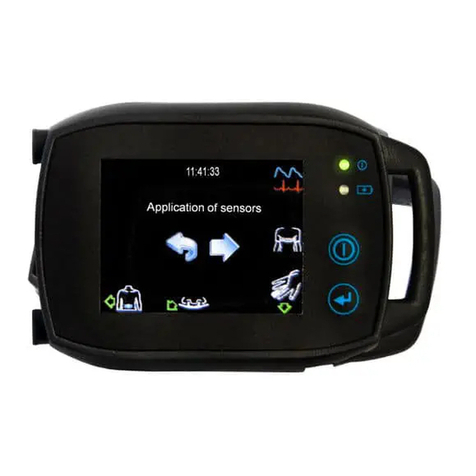
SOMNOmedics
SOMNOmedics SOMNOtouch RESP eco User manual
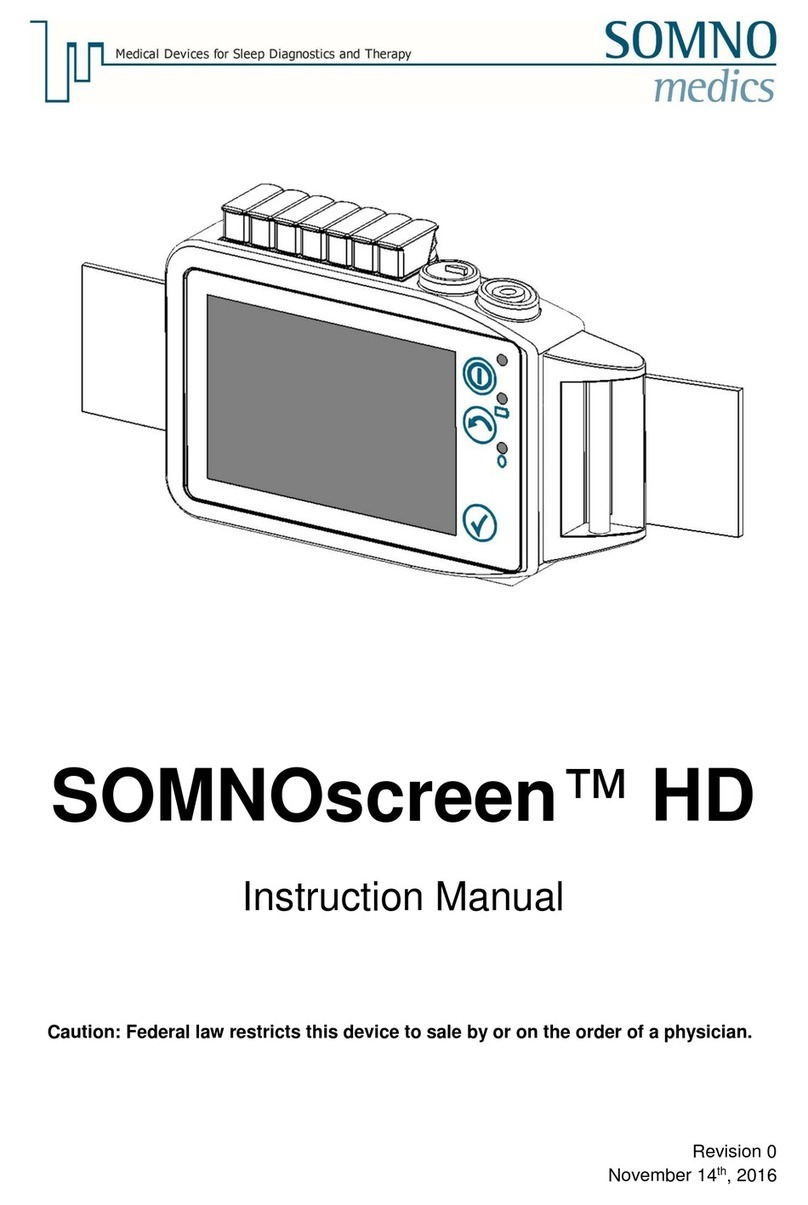
SOMNOmedics
SOMNOmedics SOMNOscreen HD User manual

SOMNOmedics
SOMNOmedics SOMNOwatch plus R User manual

SOMNOmedics
SOMNOmedics SOMNO HD Eco User manual
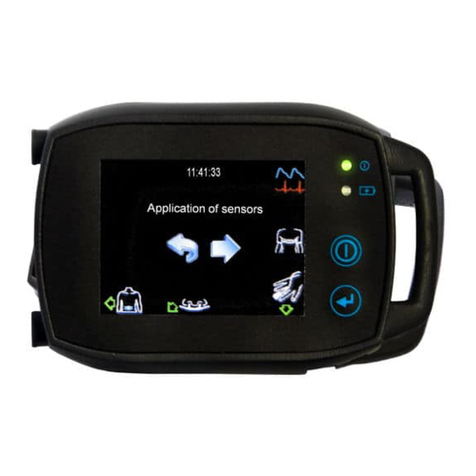
SOMNOmedics
SOMNOmedics SOMNOtouch RESP User manual
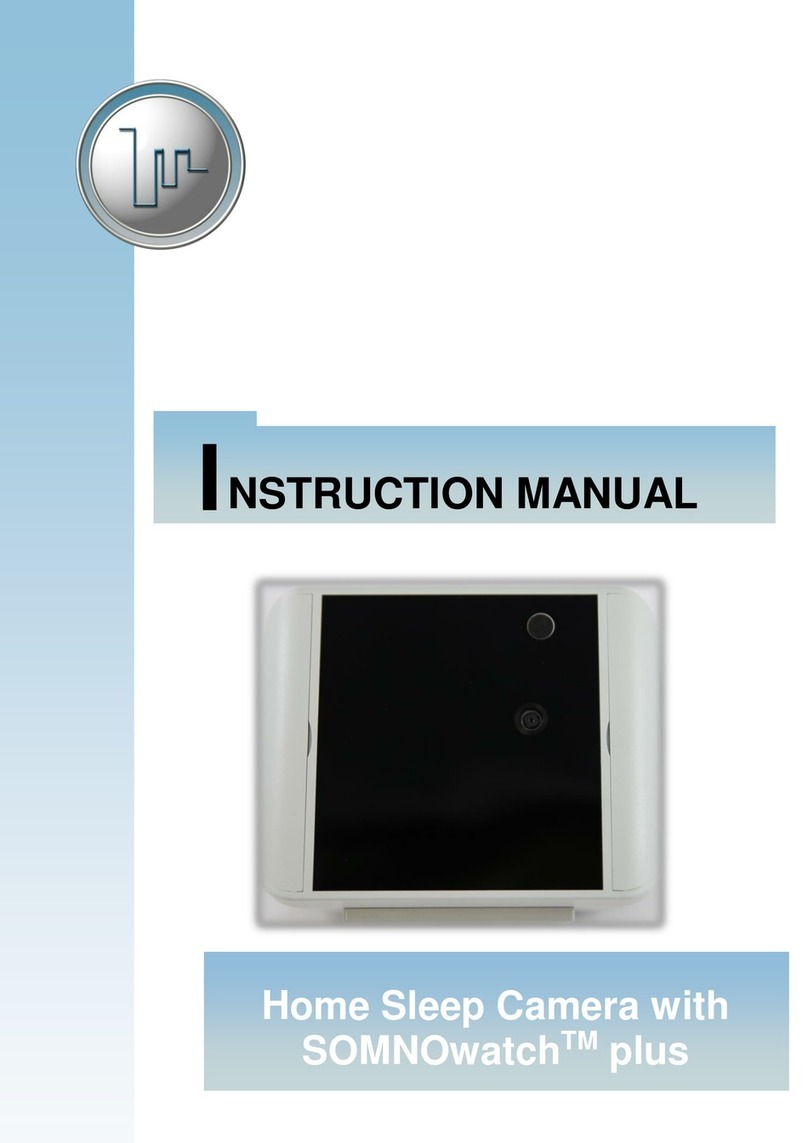
SOMNOmedics
SOMNOmedics SOMNOwatch plus User manual
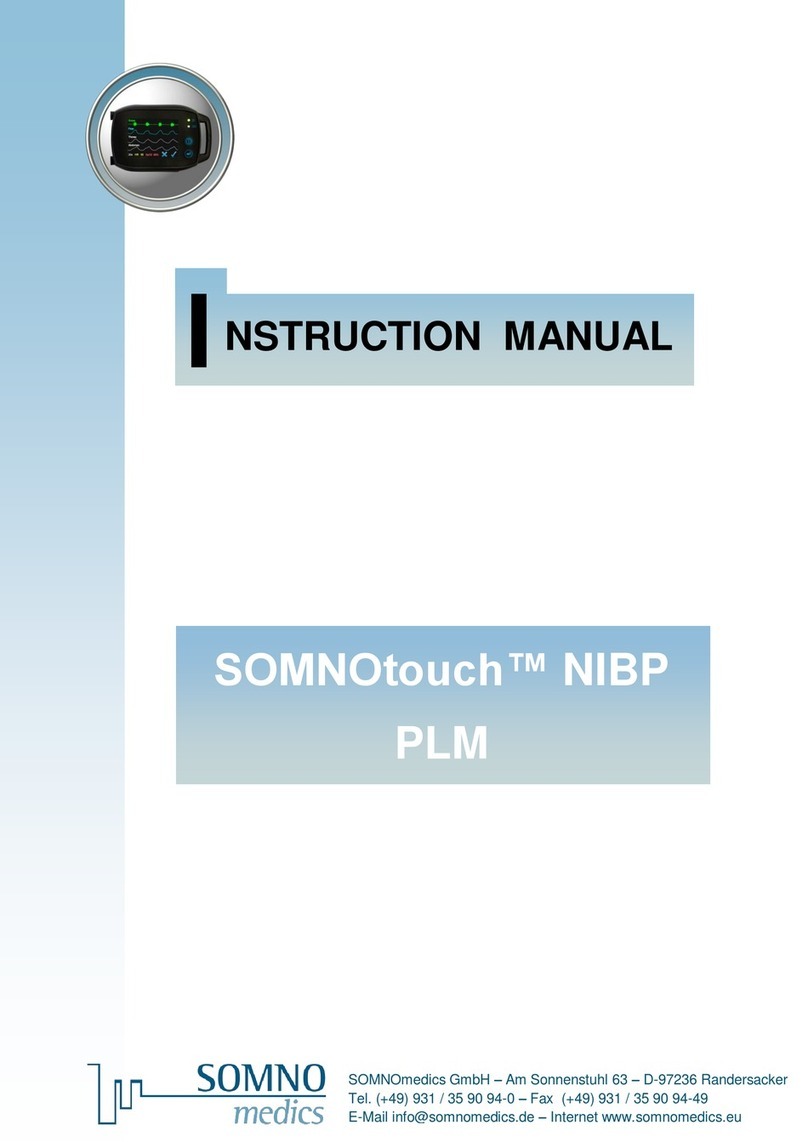
SOMNOmedics
SOMNOmedics NIBP PLM User manual
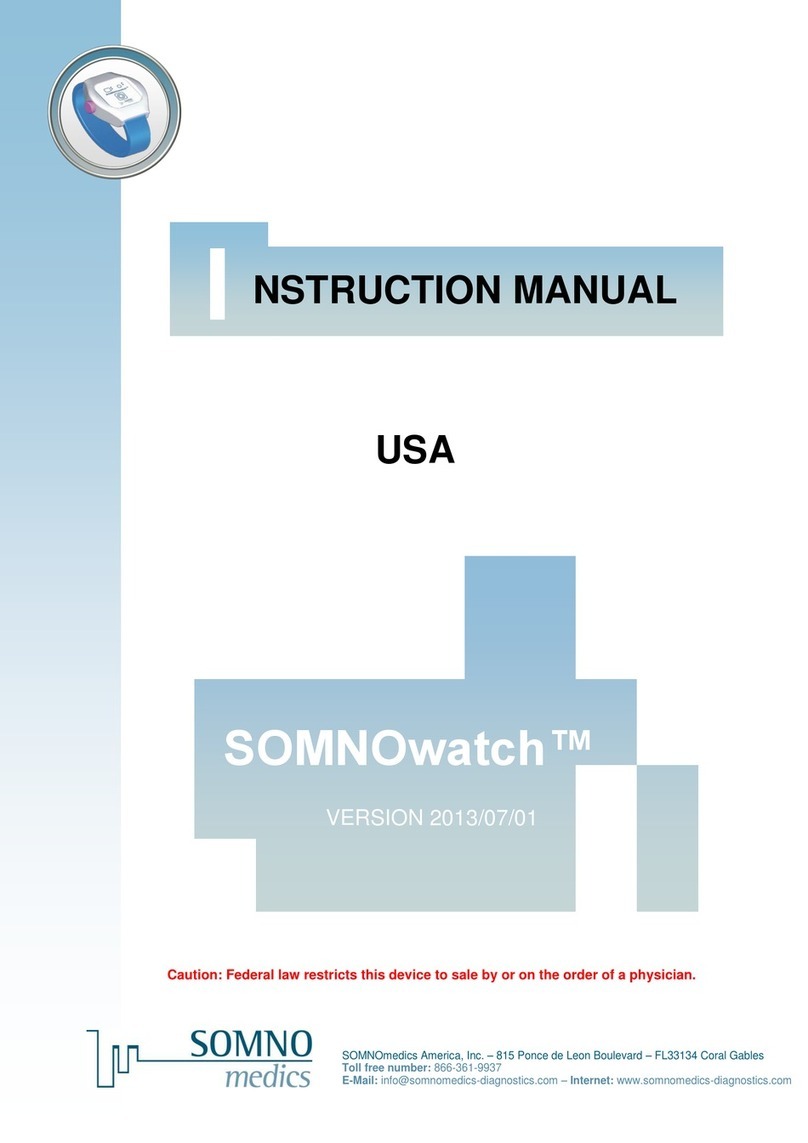
SOMNOmedics
SOMNOmedics SOMNOwatch User manual
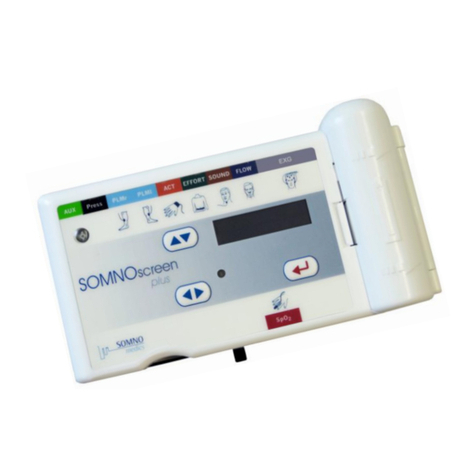
SOMNOmedics
SOMNOmedics SOMNOscreen plus User manual

SOMNOmedics
SOMNOmedics SOMNOtouch RESP User manual
